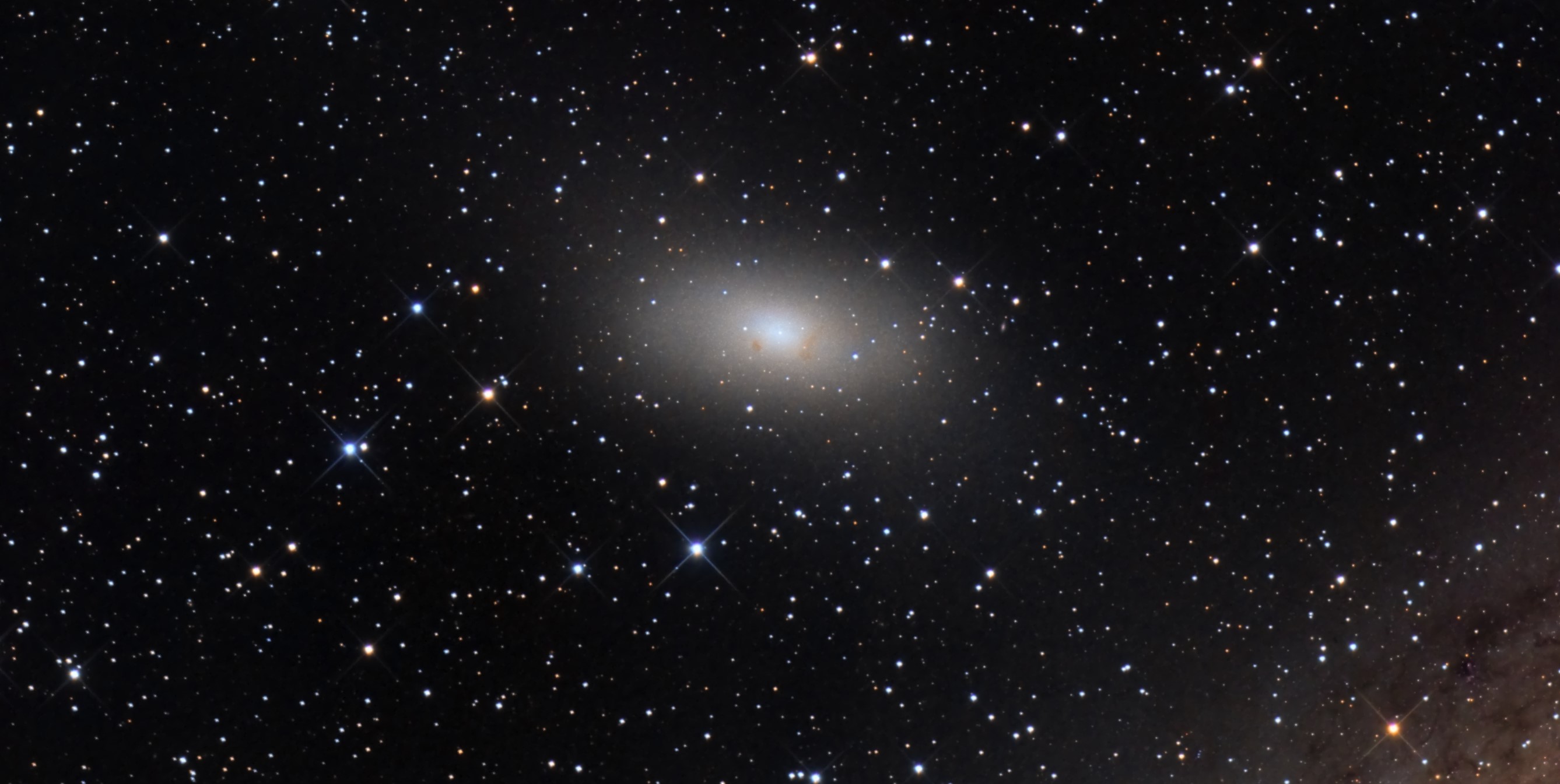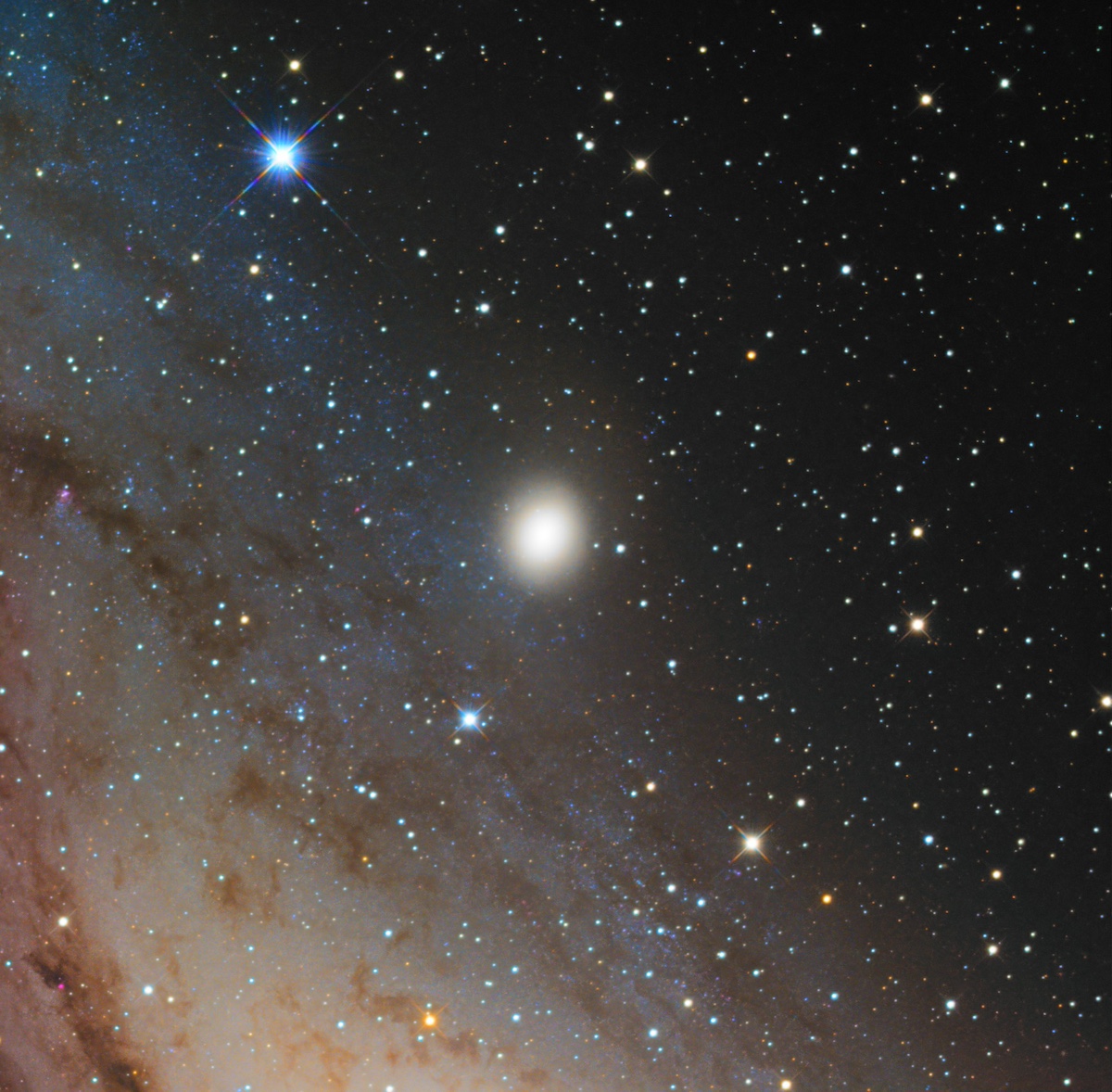Unveiling the Secrets of Messier 32 (M32) – A Journey into the Heart of a Dwarf Galaxy
Introduction
Welcome to the captivating world of astronomy, where we embark on a journey to unravel the mysteries of the cosmos. In this article, we delve deep into the enigmatic Messier 32, affectionately known as M32, a dwarf galaxy that has fascinated astronomers for centuries. Named after the renowned French astronomer Charles Messier, M32 is a celestial wonder that beckons us to explore its intriguing features and uncover the secrets it holds.
M32: A Celestial Neighbor
A Brief Overview
M32, also referred to as NGC 221, is a compact elliptical galaxy situated in the constellation Andromeda, approximately 2.65 million light-years away from Earth. It is a prominent member of the Local Group, a collection of galaxies that includes our very own Milky Way, as well as the iconic Andromeda Galaxy (M31). With its proximity to both our galaxy and M31, M32 offers a unique opportunity for astronomers to study a dwarf galaxy in close detail.

Size and Structure
M32’s diminutive size, compared to its neighboring behemoth M31, is one of its defining characteristics. This dwarf galaxy measures a mere 6,500 light-years in diameter, making it roughly one-fiftieth the size of the Milky Way. Despite its small stature, M32 exhibits a well-defined structure, with a central bulge surrounded by a compact stellar halo.
Stellar Population
One of the key aspects that make M32 intriguing is its stellar population. It primarily consists of older, red and yellow stars, indicating that it formed early in the universe’s history. The absence of young, blue stars suggests that M32 has ceased its star-forming activities, a trait common among elliptical galaxies.
M32’s Connection to the Andromeda Galaxy
A Gravitational Dance
M32’s proximity to the Andromeda Galaxy has had a profound impact on both objects. Astronomers believe that these two galaxies have been engaged in a gravitational dance for billions of years. This interaction has led to various fascinating phenomena, including the disruption of M32’s outer stars and the creation of tidal tails.
Tidal Tails
One of the most visually striking consequences of the M32-Andromeda interaction is the presence of tidal tails. These elongated streams of stars extend from M32’s main body and are a direct result of the gravitational forces exerted by the larger Andromeda Galaxy. Studying these tidal tails can provide insights into the dynamics of galactic interactions and the mechanisms driving the evolution of galaxies.
Unlocking the Mysteries of M32
Stellar Evolution
M32’s unique position as a dwarf galaxy in proximity to a massive neighbor presents an excellent opportunity to study stellar evolution. Astronomers can observe the effects of proximity to M31 on M32’s stellar population, shedding light on how galactic interactions influence the formation and evolution of stars.

Dark Matter and Mass Distribution
Another intriguing aspect of M32 is its mysterious mass distribution. Although it appears as a compact elliptical galaxy, its internal dynamics suggest the presence of a significant amount of dark matter. Investigating M32’s dark matter content can provide valuable insights into the nature of this elusive substance and its role in galaxy formation.
Observing M32: A Visual Treat
Binocular and Telescopic Views
M32 is easily visible through binoculars and small telescopes, making it a favorite target for amateur astronomers. Its proximity to the Andromeda Galaxy allows for stunning views of both objects in the same field of view. On a clear night away from light pollution, locating M32 is a rewarding experience for stargazers of all levels.

Historical Significance
Messier’s Discovery
The discovery of M32 can be attributed to Charles Messier himself. On the night of October 24, 1749, Messier noted this faint, hazy object while observing the Andromeda Galaxy. He cataloged it as the 32nd entry in his list of objects that could be mistaken for comets, hence its designation as Messier 32. Little did Messier know that his discovery would continue to captivate astronomers for centuries to come.
Recent Advances in M32 Research
Hubble’s Gaze
In recent years, the Hubble Space Telescope has provided astronomers with unprecedented views of M32. Its high-resolution images have allowed scientists to study the galaxy’s structure, stellar population, and interaction with the Andromeda Galaxy in exquisite detail. Hubble’s observations have significantly advanced our understanding of M32’s enigmatic nature.
The Future of M32 Exploration
Upcoming Missions
As technology continues to advance, astronomers eagerly anticipate the launch of new space telescopes and missions that will further enhance our understanding of M32. These missions promise to deliver even more detailed images and data, allowing us to delve deeper into the mysteries of this dwarf galaxy.
Conclusion
In conclusion, Messier 32 (M32) is a celestial gem that beckons astronomers and stargazers alike to explore its fascinating features and unravel its secrets. Its proximity to the Andromeda Galaxy, along with its unique characteristics, makes it a valuable object of study in the realm of astronomy. From its stellar population to its gravitational interactions, M32 continues to captivate our curiosity and inspire future generations of astronomers. As we peer deeper into the cosmos, M32 remains a shining example of the wonders that await our discovery among the stars.
Explore the Cosmos Further:
- Andromeda Galaxy (M31): Our Galactic Neighbor
- Hubble Space Telescope – Official Website
- Charles Messier and His Catalog
Stay tuned for more exciting astronomical discoveries and adventures in the cosmos!

